- Home
- Victor Hugo
The Hunchback of Notre-Dame Page 2
The Hunchback of Notre-Dame Read online
Page 2
1830 Hugo's fourth child, a daughter, named Adele after her mother, is born. Mme. Hugo wants no more children, and from then on sleeps alone. Sainte-Beuve betrays his best friend, Victor, by telling Adele he loves her. Hugo's play Hernani (which served as the basis for the libretto to Italian composer Giuseppe Verdi's 1844 opera Ernani), defiantly Romantic in its use of informal language and its violation of the classical "three unities" of time, place, and action, causes riots in the theater where it is performed.
1831 Notre-Dame de Paris: 1482 (The Hunchback of Notre Dame), a tale of the era of the cruel, crafty Louis XI, is published and becomes a best-seller. The visionary poetry collection Les Feuilles d'automne (The Leaves of Autumn) is published. In it Hugo displays a profundity and a mastery of the art of verse that rival the greatest European poets of the era, Johann Wolfgang von Goethe and Percy Bysshe Shelley.
1832 Hugo's play Le Roi s'amuse (The King's Fool), which will in spire Giuseppi Verdi's great opera Rigoletto (1851), is banned after opening night owing to its disrespectful por trayal of a king. Hugo occupies an apartment in what is today called la place des Vosges, where he will remain until 1848.
1833 The minor actress Juliette Drouet enters Hugo's life. He pro vides her with an apartment near him, forbids her to go out alone, and occupies her with making fair copies of his manuscripts. The couple will continue their liaison until her death fifty years later. The first version of George Sand's feminist novel Lelia is published.
1834 Hugo ends his friendship with Sainte-Beuve.
1835 Hugo's great verse collection Les Chants du crepuscule (Songs of Twilight) appears.
1837 Hugo is made an officer of the Legion d'honneur (Legion of Honor). Les Voix interieures, the third of four collections of visionary poetry during Hugo's middle lyric period (1831-1840), appears. Victor's brother Eugene, confined in the Charenton madhouse, dies.
1838 Ruy Blas, Hugo's best play, outrages the monarchists by de picting a queen and a valet in love.
1840 Les Rayons et les Ombres (Sunlight and Shadows), the last great poetic collection before Hugo's exile, is published.
1841 After several failed attempts, Hugo is elected to the French Academy, the body of "Forty Immortals"--the greatest honor a French writer can receive.
1843 A tragic year is punctuated by the failure of Hugo's play Les Burgraves and the drowning of his beloved elder daughter, Leopoldine, her unborn child, and her husband, a strong swimmer who tried to save her after a boating accident. ugo will dedicate his poetic masterpiece, Les Contemplations, to her.
1844 Alexandre Dumas's Le Comte de Monte Cristo (The Count of Monte Cristo) appears.
1845 Hugo is made a pair de France, an appointive position in a body roughly equivalent to the British House of Lords. Ten weeks later, his affair with Mme. Leonie Biard (from 1844 to 1851) comes to light when they are arrested in their love nest and charged with adultery. She goes to prison. Hugo's rank saves him from prosecution.
1847 Honore de Balzac publishes La Cousine Bette.
1848 The monarchy is overthrown and the Second Republic pro claimed. Hugo is elected to its Constitutional Assembly, with the support of the conservatives. With his son Charles he founds and edits L'Evenement, a liberal paper that un wisely campaigns to have Louis-Napoleon Bonaparte, the nephew of the former Emperor, elected president.
1849 Hugo presides over the International Peace Conference in Paris and delivers the first public speech that proposes the creation of a United States of Europe. Eugene Delacroix paints the ceiling of the Louvre's Salon d'Apollon.
1849 1851 Hugo increasingly criticizes the government's policies, mak ing fiery speeches on poverty, liberty, and the church. His positions provoke the ire of the government.
1851 The government briefly imprisons Hugo's two sons in June for having published disloyal articles in L'Evenement. Soon after Louis-Napoleon's coup d'etat (actually, a legal election that creates the Second Empire) in early December, Hugo learns that the imperial police have issued a warrant for his arrest. He flees with his family and mistress to Belgium and then to the Isle of Jersey, a British possession in the English Channel.
1852 1853 In 1852 Louis-Napoleon declares himself emperor as Napoleon III. Hugo writes a scathing satire, Napoleon le petit. From 1853 to 1855 he attends seances at which the spirits of both the living and the dead (including Shake speare, Jesus, and a cowering Napoleon I) seem to commu nicate by tapping on the table. They explain that all living beings must expiate their sins through a cycle of punitive reincarnations, but that all, even Satan, will finally be par doned and merge with the Godhead. These ideas figure prominently in Hugo's visionary poetry for the remainder of his life. Georges Haussmann (1809-1891) begins the urban renewal of Paris.
1853 Hugo publishes Les Chatiments (The Punishments), power ful anti-Napoleonic satire.
1855 Hugo moves to the Channel island of Guernsey.
1856 Hugo's Les Contemplations, his poetic masterpiece, appears. Profits from its sales allow him to purchase Hauteville House on Guernsey, today a museum.
1857 Gustave Flaubert's novel of adultery, Madame Bovary--the work most influential on Western novelists until after World War II-is published in book form, as is the first edition of Charles Baudelaire's poetry, Les Fleurs du mal (The Flowers of Evil). Both men and their publishers are placed on trial for offenses to public morals. Baudelaire's publisher is fined and must remove seven poems treating lesbianism and sadism.
1859 The first volume of Hugo's poetic history of the world, La Legende des siecles (The Legend of the Centuries), appears.
1861 The danger of arrest having subsided, Hugo's wife, Adele, and her sons begin leaving him to stay in Paris during the winter months. She secretly meets with Sainte-Beuve there.
1862 Les Miserables, a 1,200-page epic completed in fourteen months, is published on the heels of a fertile period during which Hugo wrote many political speeches and creative works. Hugo's famous novel gains an enormous popular au dience, although the book is panned by critics and banned by the government. He begins hosting a weekly banquet for fifty poor children.
1866 Guernsey provides the setting for Hugo's regional novel Les Travailleurs de la mer (The Toilers of the Sea). Edgar Degas commences his series of ballet paintings. Works of Cezanne, Renoir, Monet, and other Impressionists appear. The next year Emile Zola's novel Therese Raquin is published.
1868 Hugo's wife, Adele, dies unexpectedly in Brussels. She had
been living apart from Victor for several years, but the two had remained friends.
1869 Hugo publishes the historical novel L'Homme qui rit (The Man Who Laughs). He declines a second offer of amnesty from Napoleon III. Sainte-Beuve dies.
1870 Defeated by the Prussians at Sedan, Napoleon III surrenders to them and is deposed. France's Third Republic is pro claimed. Hugo returns to Paris in triumph after nineteen years in exile.
1871 Hugo is elected to the National Assembly, but resigns due to the opposition of right-wing members. His son Charles dies.
1872 Consumed by madness, Hugo's daughter Adele is institu tionalized until her death, in 1915. Jules Verne's Le Tour du Monde en quatre-vingts jours (Around the World in Eighty Days) is published.
1873 Hugo's younger son, Francois-Victor, dies. French Symbol ist poet Arthur Rimbaud publishes Un Saison en enfer (A Season in Hell).
1874 Hugo publishes Quatrevingt-treize (Ninety-three), a histori cal novel about the counter-revolutionary rebellion in la Vendee (in eastern France) and events leading to the Reign of Terror in 1793. He provides nuanced portraits of both sides.
1876 Hugo is elected to the Senate.
1877 As senator, Hugo plays a leading role in preventing Marshal Marie Edme Patrice de MacMahon, president of the Third Republic from 1873 to 1879, from becoming dictator of France. Because the monarchists have split their support among various claimants to the throne, the republicans achieve a working majority. The second volume of Hugo's poetic history of the world, La Legende des siecles, a
ppears.
1878 A stroke leaves Hugo incapable of composing additional lit erary works.
1880 After years of efforts, Hugo arranges amnesty for the Commu nards, popular-front rebels in the Paris of 1871 opposed to surrender to the Prussians. Some 20,000 of them, including women and children, had been slaughtered by French gov ernment troops--more than the total of those guillotined during the Reign of Terror in 1793. Guy de Maupassant's collected Contes (Stories) are published.
1881 On February 26, Hugo's birthday, a national holiday is pro claimed, and 600,000 marchers pass his windows. The street where he lives is renamed L'avenue Victor-Hugo.
1882 Hugo is reelected to the Senate. His play Torquemada (1869) is performed.
1883 Juliette Drouet, Hugo's mistress since 1833, dies after a pro longed struggle with cancer. The final volume of Hugo's po etic history of the world, La Legende des siecles, appears.
1885 Victor Hugo dies May 22. Two million mourners pass his coffin underneath the Arc de Triomphe. Hugo is entombed in the Pantheon, the first of a series of culture heroes and great leaders to be placed there. June 1 is declared a day of national mourning. Posthumous publications will enhance his reputation for decades--notably, the verse collections La Fin de Satan (The End of Satan, 1886), Toute la lyre (1888, 1893), and Dieu (1891). His experimental plays, eventually published in a Pleiade edition as "Le Theatre en liberte," brilliantly anticipate the Theater of the Absurd in the 1950s.
1902 On the centenary of his birth, the French government opens the Maison de Victor Hugo museum in the apartment where he once lived on the place des Vosges.
1912 1918 In collaboration with Andre Antoine, the director of the nat uralistic Theatre-Libre, the filmmaker Albert Capellani, with the Pathe firm, produces a series of movies based on Hugo's works: Les Miserables (1912), Marie Tudor (1912), Quatrevingt-treize (1914), and Les Travailleurs de la mer (1918).
1923 Wallace Worsley's silent film version of The Hunchback of Notre Dame appears, starring Lon Chaney as Quasimodo.
1926 The Buddhist sect Cao Dai originates in Vietnam. It now has about 2,000 temples and several million followers world wide. The worshipers venerate Hugo and his two sons, whom they believe return to earth, reincarnated.
1939 William Dieterle's film version of The Hunchback of Notre Dame, with Charles Laughton as Quasimodo and Maureen O'Hara as Esmeralda, is released.
1975 Francois Truffaut's film Adele H., retelling the tragedy of Hugo's second daughter, wins Le Grand Prix du Cinema Francais.
1996 Walt Disney issues an animated, freely altered film version of The Hunchback of Notre Dame, distinctive in its politi cally correct treatment of gypsies, women, and persons with disabilities.
Introduction
With the Eiffel Tower and the Arc de Triomphe, the cathedral of Notre Dame figures among the most visited monuments of Paris. Famous for its Gothic facade, great portals, rose window, and looming towers, the cathedral--built principally in the twelfth century--is one of the most enduring symbols of the French capital and its medieval heritage. Aiding in the transmission of the cathedral's symbolic importance is the novel it inspired: Victor Hugo's 1831 Notre-Dame de Paris: 1482, better known in English as The Hunchback of Notre Dame. In it, Hugo brings to life the cathedral of Notre Dame as it existed at the end of the fifteenth century. Many critics and readers have seen the great church as the novel's true hero, as it takes an active role in the narrative and resides at the core of the ideological message Hugo seeks to project on collective and individual destiny, the passage of time, and the nature of progress. Indeed, Hugo's novel is perhaps as well known today as the cathedral itself and is, alongside its main characters--Claude Frollo, the fiery priest; Quasimodo, the hideously deformed bell ringer; Phoebus, the golden guardsman; and Esmeralda, the beautiful gypsy girl--firmly implanted in cultural consciousness. From the written page to the stage and screen, the tale has been told and retold countless times, its impact and capacity for reinvention rivaled only by that of another of Hugo's novels, the ever-popular Les Miserables (1862). If the flurry of recent reprintings and adaptations-including two Disney films and a new musical version--are any indication, generations to come will continue to be enthralled by Hugo's story of love rendered impossible.
Yet did Hugo set out to immortalize Notre Dame? As much myth surrounds the origin and writing of the novel as surrounds the cathedral itself. If the publicly presented version is to be believed, The Hunchback of Notre Dame was written from July 1830 to January 1831. This account is furnished in Victor Hugo raconte par un temoin de sa vie (Victor Hugo: A Life Related by One Who Has Witnessed It, 1863; henceforth cited as A Life Related), a testimonial written by Hugo's wife, Adele, with, as it often has been observed, more than a helping hand from her husband. The novel had been under contract with the publisher Gosselin since 1828, but the theatrical success of Hugo's play Hernani (1830) distracted the writer from the project. In April 1830 Hugo still had not begun the novel and was threatened by Gosselin with financial sanctions if he failed to deliver the manuscript. A new deadline of December 1830 was agreed upon but was then jeopardized by the political and social upheaval of July 1830, during which the restored Bourbon monarchy was toppled and Louis-Philippe, duke of Orleans, ascended the throne. Consumed by these events and their impact, and additionally troubled by a book of notes that had "disappeared" during his family's move to a new apartment, Hugo, who had only begun to compose his novel, lost weeks of writing time. Gosselin grudgingly agreed to another extension, pushing back the due date to February 1, 1831. It was at this point, according to Adele's explanation, that her husband entered into his novel as into "a prison," stopping only to eat and sleep. In one of the most famous anecdotes of A Life Related, she recounts how Hugo, upon returning to writing The Hunchback, bought a new bottle of ink. He plunged himself into his work, using this bottle alone, which ran out only on the day he completed the manuscript--January 14, 1831--at the precise moment he marked the novel's final word on the page. As the story goes, Hugo, reflecting on this "remarkable" coincidence, considered renaming his novel "Ce qu'ilyadans une bouteille d'encre" (What Is Inside a Bottle of Ink).
This tale of the writing process, and particularly the prodigious circumstances surrounding the novel's completion, cannot, however, be taken at face value. Even in the early years of his career, Hugo was a master shaper of his own image and rarely failed to seize the opportunity to market himself, to spin reality into legend. The truth behind the composition of The Hunchback is in all likelihood more complex, and is certainly less of a good story. What is clear is that Hugo had a difficult time beginning the novel. Gosselin's threats were genuine: Hugo had engaged in a contract with the publisher and had received a sizable advance, yet in spite of the rather extensive research he undertook, the manuscript did not materialize. What is also clear is that his recent triumph in the theater kept his attention elsewhere: Not only was Hernani an overwhelming success, but by 1830 Hugo was widely considered the leader of the growing Romantic movement in France. The preface he wrote to his 1827 historical play Cromwell was nothing short of a manifesto that boldly sought to redefine the aesthetics of French theater; it raised the Romantic flag against the constraining tenets of classical drama. Hernani, with its revolutionary use of poetic language and mixture of dramatic modes, put this new vision to the test, and the spectacular polemic that swirled around the play brought Hugo, despite past failures such as Amy Robsart (1828), to the forefront of the theater scene. In addition, poetry (the genre in which Hugo had first distinguished himself by winning, at age seventeen, a prestigious award for his ode on the re-erection of a statue of Henri IV, and which put bread on his table with one of the last royal pensions in the 1820s) continued to occupy him, as did the literary criticism in which he increasingly engaged.
What is less evident in Adele's account of The Hunchback's composition are the events of Hugo's personal life, which undoubtedly had an effect on his concentration--be they salutary, such as the birth of
the couple's second daughter, Adele, in late July 1830, or troubling, such as problems in the Hugo marriage that stemmed from his wife's nascent affair with Hugo's close friend, the poet and literary critic Charles-Augustin Sainte-Beuve. Equally unaddressed--or at the very least underaddressed--is a certain hesitancy on Hugo's part regarding the genre of the novel. Although writing The Hunchback was appealing in that it would bring money to the growing family's coffer, Hugo was keenly aware that the novel was generally considered a frivolous literary form. Even as it was already showing by its suppleness to be the genre perhaps best suited to reflect the concerns of the new society born of the French Revolution, and in spite of efforts in the form undertaken in the first decades of the nineteenth century by respected writers such as Benjamin Constant, Francois-Rene de Chateaubriand, and Madame de Stael, the novel was nonetheless still perceived in the 1820s as a minor genre and lagged in importance far behind poetry and theater, which were both steeped in classical tradition and prestige.
Prior to The Hunchback of Notre Dame Hugo had already written and published three novels--Han d'Islande (Han of Iceland, 1823), Bug-Jargal (1826), and Le Dernier Jour d'un condamne a mort (The Last Day of a Condemned Man, 1829). Yet each of these examples was more a response to personal or growing social preoccupations than an effort to practice or elevate the genre: Han of Iceland, a Gothic tale of thwarted young lovers, plays out Hugo's own love story with Adele (he once said that she was the only person who was meant to understand it). Bug-Jargal, which centers on an episode from the then recent past--a violent 1791 slave revolt in Santo Domingo (present-day Haiti)--had its origins in a school bet in which Hugo was challenged to compose a novel in a period of two weeks. The Last Day of a Condemned Man, a first-person narrative that follows a man through prison to the guillotine, was a polemically charged effort to bring awareness to the horrors of the death penalty. Hugo's first novelistic endeav ors can be understood as rather isolated attempts to give voice to private or socially oriented concerns. One unifying influence on Hugo's early novel writing is, however, indisputable--that of the Scottish novelist Sir Walter Scott, author of Waverley (1814), Rob Roy (1818), Ivanhoe (1819), and Quentin Durward (1823). Scott's mastery of the historical novel brought the genre quickly into vogue and helped, in the 1820s, to advance the merits of the novel as a literary form. Staunch and fervent admirers--among them Honore de Balzac, the future author of La Comedie humaine (The Human Comedy)--declared themselves, and French historical novels, such as Alfred de Vigny's Cinq-Mars (1826) and Prosper Merimee's Chronique du regne de Charles IX (Chronicle of the Reign of Charles the Ninth, 1829), began to appear and garner attention. In the same way that nature inspired introspection and reflection in Romantic poetry, history served as the fertile terrain of the Romantic novel. Whether this renewed interest in French history was the result of reawakened national sentiment or sought to exalt and glorify the ideals of the distant past in an effort to soothe the still-open wounds of the Revolution, the historical backdrop and content lent legitimacy and weight to the form, and was the push the novel needed to propel it forward.

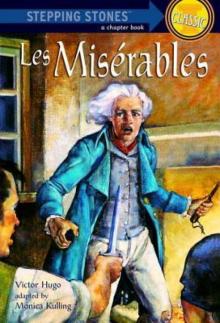 Les Miserables
Les Miserables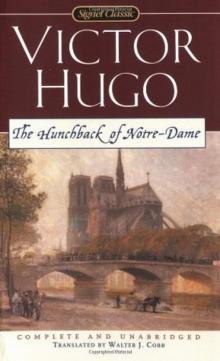 The Hunchback of Notre-Dame
The Hunchback of Notre-Dame The Man Who Laughs
The Man Who Laughs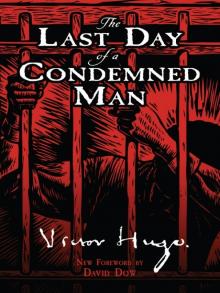 The Last Day of a Condemned Man
The Last Day of a Condemned Man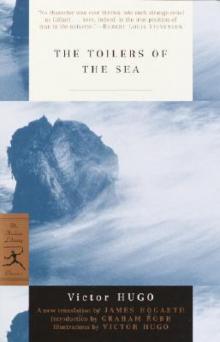 The Toilers of the Sea
The Toilers of the Sea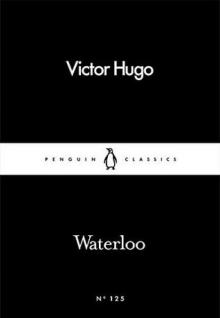 Waterloo
Waterloo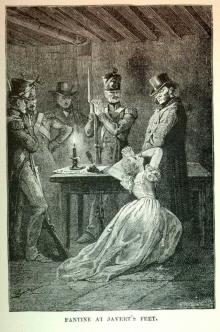 Les Misérables, v. 1/5: Fantine
Les Misérables, v. 1/5: Fantine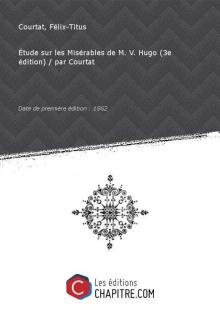 Les Misérables, v. 3/5: Marius
Les Misérables, v. 3/5: Marius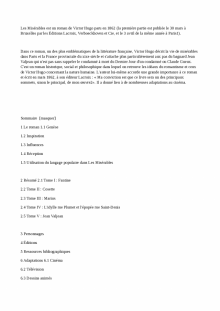 Les Misérables, v. 2/5: Cosette
Les Misérables, v. 2/5: Cosette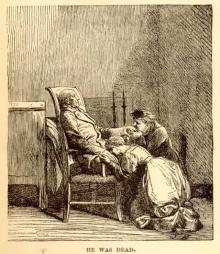 Les Misérables, v. 5/5: Jean Valjean
Les Misérables, v. 5/5: Jean Valjean Hunchback of Notre Dame (Barnes & Noble Classics Series)
Hunchback of Notre Dame (Barnes & Noble Classics Series)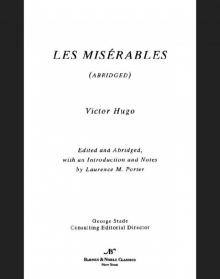 Les Miserables (abridged) (Barnes & Noble Classics Series)
Les Miserables (abridged) (Barnes & Noble Classics Series)